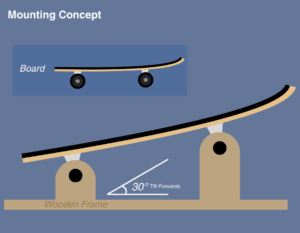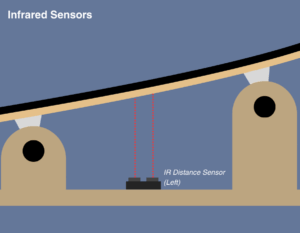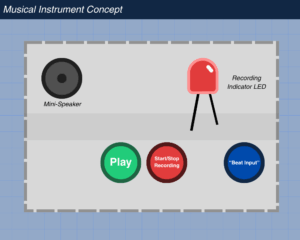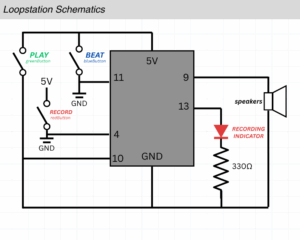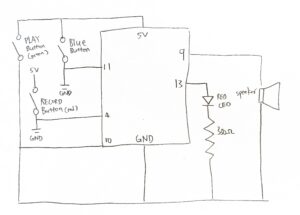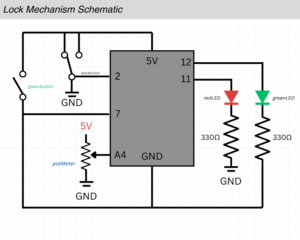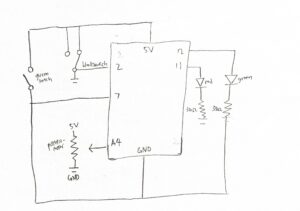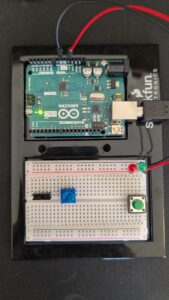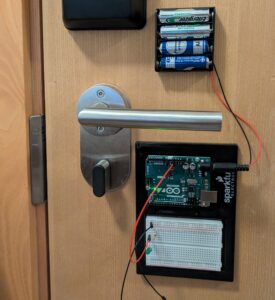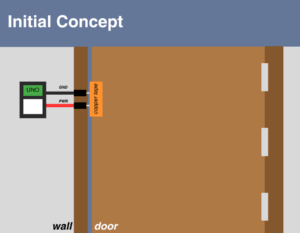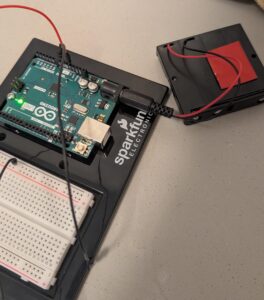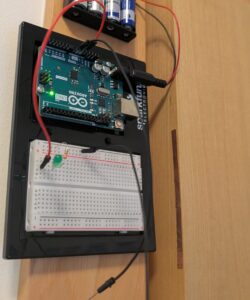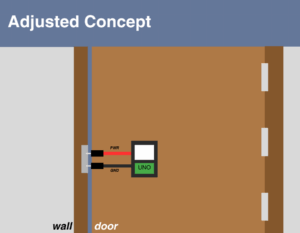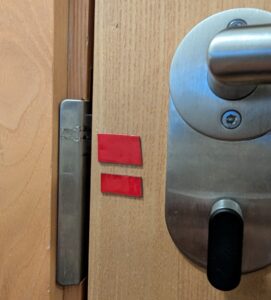For this week’s user testing, I invited my good friend Clara to be my test subject. Clara has never stood on a skateboard before and this was her first time. I try to tell her as little as possible but I did tell her to feel free and grab the table in front of her if she felt unsafe or if she lost her balance.
First I asked her to simply step onto the board; this is good for me to see where her feet would naturally stand. I’m also going to use Clara as the average height of a female user from now on.
Then I got a shot from further away to see how she was naturally adjusting to the board as she got on. I pay special attention to how people bend their knees and adjust their arms when they’re leaning on the board.
Lastly, I told her to try and lean far back and far forward to see if she was comfortable.
Are they able to figure it out? Where do they get confused and why? Do they understand the mapping between the controls and what happens in the experience?
Prior to Clara, I’ve also had a few other people step onto the board and everyone so far has understood how to step onto the board safely and slowly.
However, first-timers always express that either tilting forward or backward is initially a little scary, but the other way was fine; more people indicated that leaning backward made them more nervous than learning forward.
The controls are pretty intuitive based on what I’ve asked Clara and the many other unofficial test users. Afterall, you simply learn forward or backward once you’re on the board.
What parts of the experience are working well? What areas could be improved?
People who have never stood on a skateboard before were really excited to try; everyone so far approaches the experience with caution so that part is working great. I believe the fact that the board is stationary calms a lot of people’s nerves. It did come to my attention that a lot of people on campus might be wearing very casual and loose footwear on the day of the showcase (sandals, crocs, etc), so I should probably restrict loose footwear that doesn’t hold your foot in place very well.
I’m going to make a slideshow explaining everything about the project for people who are lining up to try if there’s someone already playing with the project.
What parts of your project did you feel the need to explain? How could you make these areas more clear to someone that is experiencing your project for the first time?
I felt like I had to explain to people that whether you skate goofy or regular was not dependent on your dominant hand, and that they should do what feels more natural to them.
I think a quick tutorial on how to stand on a skateboard before the game starts would be great. In addition to that, I’ve placed some colored tape to indicate where to stand and especially where not to stand (like the tail).


